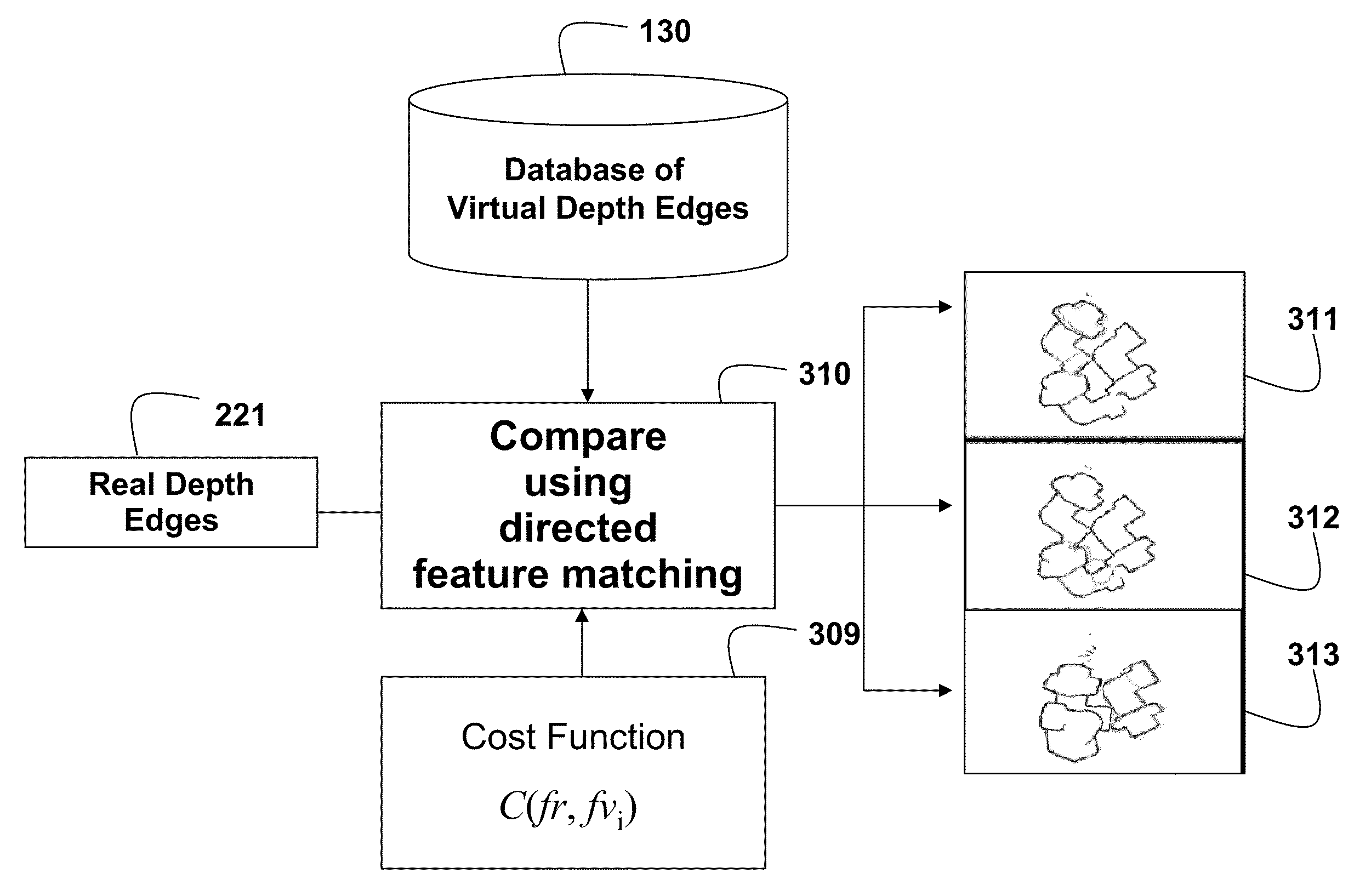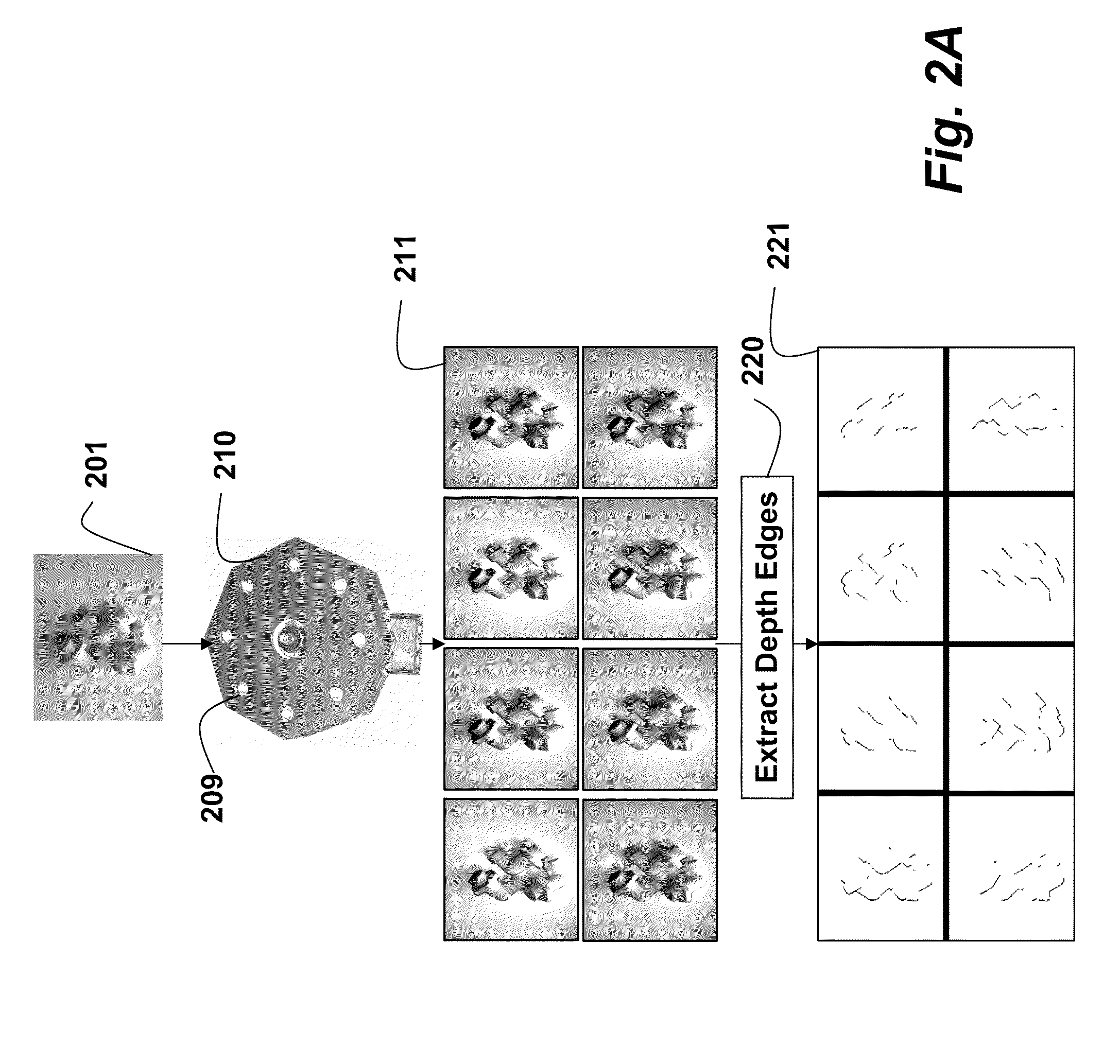System and Method for Determining Poses of Objects
a technology of object pose and system, applied in the field of computer vision systems, can solve the problems of human intervention, suboptimal performance, damage to the robot arm or object, etc., and achieve the effect of improving the accuracy of object stacking
- Summary
- Abstract
- Description
- Claims
- Application Information
AI Technical Summary
Benefits of technology
Problems solved by technology
Method used
Image
Examples
Embodiment Construction
Pre-Processing
[0021]FIG. 1 show a pre-processing procedure for determining 3D poses of objects according to embodiments of our invention. The procedure can be performed in a processor including a memory, and input / output interfaces as known in the art. The pose includes the x, y, z translational location and the θ, φ, φ angular orientation. The method can be performed for various types of objects to construct a database used during actual operation of the method, also performed in a processor.
[0022]A rendering engine 110 (OpenGL) generates sets of virtual images 111 of a 3D model 101 of the object using a virtual camera. Each set is for a different possible known pose 101 of the model. The model is illuminated by a set of (eight) virtual point light sources 102 arranged around a lens 104 of the virtual camera. Therefore, there are eight virtual images in each set 111 for each known pose 103.
[0023]Virtual depth image edges 121 are constructed 120 from the set of virtual images as des...
PUM
 Login to View More
Login to View More Abstract
Description
Claims
Application Information
 Login to View More
Login to View More - R&D
- Intellectual Property
- Life Sciences
- Materials
- Tech Scout
- Unparalleled Data Quality
- Higher Quality Content
- 60% Fewer Hallucinations
Browse by: Latest US Patents, China's latest patents, Technical Efficacy Thesaurus, Application Domain, Technology Topic, Popular Technical Reports.
© 2025 PatSnap. All rights reserved.Legal|Privacy policy|Modern Slavery Act Transparency Statement|Sitemap|About US| Contact US: help@patsnap.com



